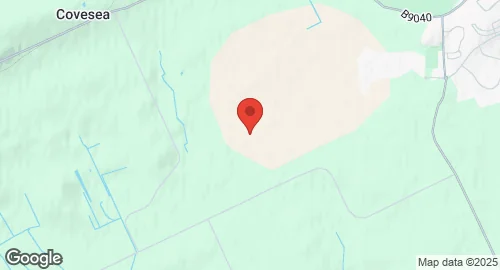RAF Lossiemouth
Summary
| Operating Country | 🇬🇧 United Kingdom |
| Location | 🇬🇧 United Kingdom |
| Status | ◉ Active |
| Usage | Military only |
| Year built | 1938 |
| Operating Organization | Royal Air Force |
| Units |
|
Description
RAF Lossiemouth is a military airfield located on the western edge of Lossiemouth in Moray, north-east Scotland. It is one of the largest and busiest fast-jet stations in the Royal Air Force (RAF) and is one of two main operating bases for the Eurofighter Typhoon FGR4 in the United Kingdom. It is home to four front-line fast jet units operating the Typhoon: No. 1 Squadron, No. 2 Squadron, No. 6 Squadron, and No. 9 Squadron. These squadrons contribute to the Quick Reaction Alert (Interceptor) North capability, providing continuous protection of UK airspace. The station also hosts No. 120 Squadron and No. 201 Squadron, which fly the Poseidon MRA1 in the maritime patrol role. No. 8 Squadron is slated to operate the RAF's new fleet of Boeing Wedgetail AEW1 airborne early warning and control aircraft, with aircrew training expected to commence in 2025. No. 42 Squadron serves as the operational conversion unit for both the Poseidon and Wedgetail.
The airfield's construction began in 1938, and it formally opened on 1 May 1939, initially used by the RAF as part of Bomber Command. During the Second World War, it hosted various bomber units and operational training units, and its first surfaced runways were constructed by the US Army Air Force in late 1942. Notable operations included missions against the German battleship Tirpitz. In July 1945, after the war, No. 46 Maintenance Unit undertook the task of breaking up surplus aircraft for scrap. On 2 July 1946, Lossiemouth transferred to the Fleet Air Arm (FAA) and was known as RNAS Lossiemouth or HMS Fulmar, serving as a basic training station. It returned to RAF control on 28 September 1972, subsequently operating as a fast-jet base with units such as the SEPECAT Jaguar and Avro Shackleton AEW.2.
In the 1980s, the Blackburn Buccaneer returned to Lossiemouth as an RAF maritime strike aircraft. During the 1991 Gulf War, Buccaneer squadrons from Lossiemouth participated in Operation Granby, providing laser designation for other aircraft and deploying laser-guided bombs. The 1990s saw a transition to the Panavia Tornado, with No. 15 (Reserve) Squadron becoming the RAF Tornado GR4 Operational Conversion Unit. Following the 2010 Strategic Defence and Security Review, Lossiemouth was retained and became the main operating base for the Eurofighter Typhoon in Scotland, with Typhoon squadrons transferring from RAF Leuchars in 2014-2015. Search and rescue operations by No. 202 Squadron ceased in April 2015.
Significant infrastructure investments have been made, including the construction of a new hangar and support facility for the Poseidon fleet, known as the Poseidon Strategic Facility, completed in July 2020. The airfield's runways and associated operating surfaces were also resurfaced and altered to accommodate regular Poseidon operations. A new Crash, Fire and Rescue building was completed in November 2022. A basing agreement in 2017 allows the US Navy to routinely operate their Poseidons from Lossiemouth, with the US Department of Defense contributing to development. The station also hosts No. 5 Force Protection Wing, comprising No. 51 Squadron RAF Regiment and No. 2622 (Highland) Squadron Royal Auxiliary Air Force Regiment, responsible for base protection.
